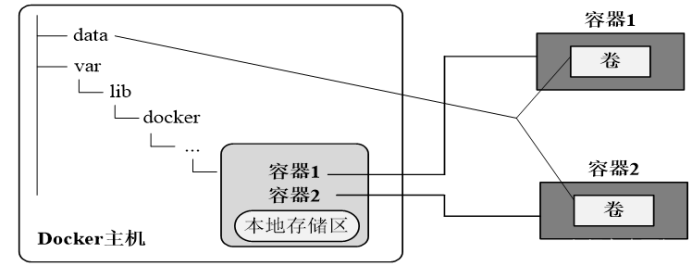五 vllm调度逻辑
前面分享的知识确实遗漏了许多细节,不过不影响我们接下来的讲解,我们在第一篇文章中已经详细讲解过三个队列用途,不熟悉的同学可以回看。
本章涉及到的流程图已上传github:
https://github.com/yblir/packages/blob/main/vllm.vsdx
从下图可以看到调度系统整体运行规则:
- vllm/core/scheduler.py:def _schedule_default(…),每次执行推理前都要走一遍调度。调度逻辑如下:

我们对调度逻辑做下详细分析:
-
- 每次执行调度前都要重新初始化一个budget类对象来管理本次调度的tokens和seqs数量, 根据数量是否超过阈值,决定将本次seq_groups放入哪个队列(一个seq_groups会包含多个seqs)。budget对象在上图三个调度方法中都有用到,用以判断正在处理的seq_group的去向。
-
-
我们来思考这样一个问题:调度的目的是让vllm每次推理都保持最大的吞吐量,而running队列中seq_groups才是送去做推理的,那么为什么调度逻辑的判断入口是swapped而不是running呢?
让我们从社会学角度来考虑这个问题:
你有没有遇到过这种情况,某天,你老板(调度)来到你面前,跟你(running)说,亲,你的工作饱和吗(最大吞吐量),要不要给你再来点?我想你肯定没遇到过。真实的情况是,老板会直接把工作甩你脸上,工作不饱和你就干吧,没时间干(gpu资源不足或处理数量超出阈值)就先积压起来(watiing or swapped),有时间再搞。那么问题来了,你(running)工作的来源有两个(waiting,swapped),要从哪个队列拿数据呢?
稍微思考下就能知道,必定先考虑积压的(swapped),因为这是已经做过一部分的工作,如果不优先处理,它们会始终占据着你的脑容量(系统资源); 而另一边,waiting队列则是完全没开始的新工作,当前也不存在任何资源占用问题,一比较就高下立判了吧!同时这也由调度原则决定:先来的请求先被服务,swapped生命历程为:waiting -> running -> swapped, 从整个时间尺度上看,swapped肯定比现在处于waiting队列的seq_group来的更早。
-
-
- 如果swapped有积压的工作(非空),说明你已经在高强度工作,不能向running继续塞新工作了。同时要看看你的工作情况(_schedule_running),看在接下来工作(下一次推理)是否有风险(预期资源不足或tokens,seqs数量超出阈值),毕竟压榨打工人是为了创造更多价值,但若直接把打工人累死就啥都没了!(gpu 爆显存)。如果swapped为空,只能从waiting队列拿数据了(使用_schedule_prefills方法调度)。
-
- 从waiting队列取出数据prefill后,先判断它的seq_groups数量,如果为非0,说明有取出seq_group,再验证下budget阈值(tokens和seqs数量,_schedule_prefills方法内部已经对budget作过校验,此处仅是为了代码健壮性),没问题就能加入running队列,愉快地做推理去,至此,本次调度完结。若waiting队列为空,没有seq_group可用,那么prefill的seq_group数量必定也为0。此时swapped和waiting队列都没有提供新的seq_group(此时swapped队列为空,但waiting队列不一定为空,也可能是当前系统资源紧张,因此跳过取数据的步骤,导致prefill.seq_groups为空),唯一还在活跃的队列是running。
-
- _schedule_running处理的是running队列,这个队列里面存储的是上一次执行推理的seq_groups, 以前行不代表现在也可以,如经过推理后新生成token的kv-cache会占用部分资源,导致系统资源不足以支撑running队列中的所有seq_groups再做一次推理,所以还要对running队列中的seq_group进行校验,如果确实不能支撑,就要执行抢占操作。
-
- 接下来要判断是否存在抢占现象,如果发生抢占,就根据抢占类型转移到不同队列中,对抢占的处理在(一)有讲到。如果没有发生抢占,用_schedule_swapped调度方法 转移seq_group到running队列。源码在这里没有对swapped队列是否为空做二次判断,也可以理解吧,毕竟如果队列为空,那就啥都不取呗!
-
- 现在获得seq_groups都是经过筛选的,能确保下一次推理时不会爆显存,还要做最后一次判断,确认没有超过调度器设置的推理时的阈值(tokens和seqs,基本可确定没问题,因为三个调度方法中都有对阈值做判断,觉得这里的判断只是为了增加代码的健壮性)。之后把经过检验的所有seq_groups加入到running队列,这些才是可用于下一次推理的seq_groups(成功上岸!)
def _schedule_default(self) -> SchedulerOutputs:
"""Schedule queued requests.
The current policy is designed to optimize the throughput. First,
it batches as many prefill requests as possible. And it schedules
decodes. If there's a pressure on GPU memory, decode requests can
be swapped or preempted.
当前策调度略旨在优化吞吐量。首先,它会批量处理尽可能多的预填充请求。然后它会安排解码。
如果 GPU 内存有压力,则可以交换或抢占解码请求。因此会优先从swapped进行判断。
"""
# Include running requests to the budget.
# 每次step都要重新初始化一个budget来管理本次调度的的tokens和seqs数量, 根据数量是否超过阈值,决定将本次
# seq_groups放入哪个队列。(一个seq_groups会包含多个seqs)
budget = SchedulingBudget(
token_budget=self.scheduler_config.max_num_batched_tokens,
max_num_seqs=self.scheduler_config.max_num_seqs,
)
# Make sure we include num running seqs before scheduling prefill,
# so that we don't schedule beyond max_num_seqs for prefill.
# 先统计正在执行推理的seq_groups中seq的数量
for seq_group in self.running:
budget.add_num_seqs(seq_group.request_id, seq_group.get_max_num_running_seqs())
# lora推理相关,可忽略
curr_loras = set(
seq_group.lora_int_id for seq_group in self.running
if seq_group.lora_int_id > 0) if self.lora_enabled else None
# 以下三个变量,类似于C++中的结构体。将多个变量合在一起,通过.属性访问
# 各自保存处于不同活跃状态(wait,run,swap)的seq_groups具有的属性
prefills = SchedulerPrefillOutputs.create_empty()
running_scheduled = SchedulerRunningOutputs.create_empty()
swapped_in = SchedulerSwappedInOutputs.create_empty()
# If any requests are swapped, prioritized swapped requests.
# 为什么要从swap开始判断?
# 调度的任务是优化吞吐量,即保证处于running状态的seqs最多。running从wait和swap队列
# 获得,首先积压的任务可能要比wait的优先级高,因为swap队列中的任务始终占据着系统资源,当
# running可添加时,应该首先处理swap。
if not self.swapped: # 如果swapped队列为空
# 既然不能从swap想running转移,那就只能从wait队列拿任务了。
# wait队列中的都是原始任务,第一步要预填充
# prefills是一个伪结构体:可以.出以下属性
# seq_groups: List[SequenceGroup]
# ignored_seq_groups: List[SequenceGroup]
# num_lookahead_slots: int
prefills = self._schedule_prefills(budget, curr_loras, enable_chunking=False)
# Don't schedule decodes if prefills are scheduled.
# NOTE: If `_schedule_prefills` doesn't enable chunking, self.running
# only contains decode requests, not chunked prefills.
# self.waiting空,或 self.swapped非空,都会导致prefills.seq_groups数量为0
# # 这个判断的意思是,prefills.seq_groups==0,说明本次调度没有安排预填充任务,那么就安排解码任务.
# 执行推理任务的seq_group都在running队列,因此需要对这个队列进行调度。
# 调度什么呢?
# 是看running队列中的seq_group是否可以继续做推理任务。因为vllm动态管理,最大限度优化吞吐量,会导致blocks资源紧张
# 上次推理生成的tokens的kv-cache需要GPU blocks去存储,导致资源消耗。那么这次准备推理时blocks数量不一定能够它完成
# 推理,所以要对running队列中每个seq_group进行检查,看是否可以进行做推理。
if len(prefills.seq_groups) == 0:
running_scheduled = self._schedule_running(budget, curr_loras, enable_chunking=False)
# If any sequence group is preempted, do not swap in any sequence
# group. because it means there's no slot for new running requests.
# 在对running队列调度后(从self.running队列取seq_group,准备进行推理),如果没有seq_group被
# 抢占(退回wait队列),也没有seq_group被转移到CPU上, 说明blocks资源充足,可以把以前
# self.swapped队列中积压的seq_group转移到gpu blocks做推理.
# 注意这几个队列的判断逻辑. 如果self.swapped原本就非空,会进入上面的if判断分支进行self.running队列
# 调度取值.然后根据这个过程中是否有seq_group被preempted和swapped_out获知blocks资源使用情况.
# 如果没有被preempted和swapped_out.说明工作不饱和,就把self.swapped内容取出来,加入running队列进行推理
# 如果有被preempted和swapped_out,说明资源紧张. self.swapped积压的任务暂时还处理不了
# 如果下面if为False,意思是就不要再从self.swapped转移seq_group会gpu做推理了
if len(running_scheduled.preempted) + len(running_scheduled.swapped_out) == 0:
swapped_in = self._schedule_swapped(budget, curr_loras)
# 最后一次判断本次推理的tokens和seqs数量是否超过阈值
assert budget.num_batched_tokens <= self.scheduler_config.max_num_batched_tokens
assert budget.num_curr_seqs <= self.scheduler_config.max_num_seqs
# Update waiting requests.
# 这个类型被抢占的seq_group,打回原型,重新加入waiting队列。
# 幸运的是添加到了队列头部,当再次从waiting队列取数据时,会优先处理它
self.waiting.extendleft(running_scheduled.preempted)
# Update new running requests.
# 将以上通过层层筛选的seq_group加入到running队列(真·running),这些seq_group才是下一步的推理对象
self.running.extend([s.seq_group for s in prefills.seq_groups])
self.running.extend([s.seq_group for s in running_scheduled.decode_seq_groups])
self.running.extend([s.seq_group for s in swapped_in.decode_seq_groups])
# Update swapped requests.
# 没有足够资源做推理的seq_group会从running转移到swap队列(swap队列是路径之一,另一个是加入到wait队列)
self.swapped.extend(running_scheduled.swapped_out)
# 统计被抢占的seq_group数量
preempted = len(running_scheduled.preempted) + len(running_scheduled.swapped_out)
# There should be no prefill from running queue because this policy
# doesn't allow chunked prefills.
assert len(running_scheduled.prefill_seq_groups) == 0
assert len(swapped_in.prefill_seq_groups) == 0
return SchedulerOutputs(
scheduled_seq_groups=(prefills.seq_groups +
running_scheduled.decode_seq_groups +
swapped_in.decode_seq_groups),
num_prefill_groups=len(prefills.seq_groups),
num_batched_tokens=budget.num_batched_tokens,
blocks_to_swap_in=swapped_in.blocks_to_swap_in,
blocks_to_swap_out=running_scheduled.blocks_to_swap_out,
blocks_to_copy=running_scheduled.blocks_to_copy +
swapped_in.blocks_to_copy,
ignored_seq_groups=prefills.ignored_seq_groups +
swapped_in.infeasible_seq_groups,
num_lookahead_slots=running_scheduled.num_lookahead_slots,
running_queue_size=len(self.running),
preempted=preempted,
)
从整体调度逻辑中我们可以看到,核心代码是三处子调度方法,接下来我们来详细分析下这些方法的代码。
5.1 _schedule_prefills调用逻辑
对waiting队列的调度充斥着各种判断,核心只有一条:当把取出seq_group加入running队列进行推理时,系统资源是否够用。
基于此,有以下几种处理方式:
- 准备取出的seq_group 超出prompt长度阈值,标记为finish,以后不再处理
- 准备取出的seq_group 需求的blocks数量超出阈值,两种处理:①标记为finish,以后不再处理,② 不再取出seq_group,留待以后再处理,跳出调度流程。
- 准备取出的seq_group tokens或seq数量超出推理能承受的阈值,不再取出seq_group,留待以后再处理,跳出调度流程

def _schedule_prefills(
self,
budget: SchedulingBudget,
curr_loras: Optional[Set[int]],
enable_chunking: bool = False,
) -> SchedulerPrefillOutputs:
# ignored_seq_groups:记录因太长(所需的blocks和总blocks之间的差值超过阈值了),
# 而无法继续做生成的seq_group,这些seq_group中的seq状态都会被标记为
# FINISHED_IGNORED,表示直接不处理他们
ignored_seq_groups: List[SequenceGroup] = []
# 用于装载从wait队列转移出来的seq_group
seq_groups: List[SequenceGroup] = []
waiting_queue = self.waiting
leftover_waiting_sequences: Deque[SequenceGroup] = deque()
# self._passed_delay:通过比较当前请求到达时间来确定是否要从wait队列拿任务
# 因为拿任务也要占用时间,需要平衡调度任务与推理任务的调用时机
while self._passed_delay(time.time()) and waiting_queue:
seq_group = waiting_queue[0]
# list,从当前seq_group取出准备推理的seq序列. 1个prompt可能有多个seq(多输出),但wait队列中连预填充
# 都没进行,因此这时的seq(仅是prompt)数量必定==1
waiting_seqs = seq_group.get_seqs(status=SequenceStatus.WAITING)
assert len(waiting_seqs) == 1, "Waiting sequence group should have only one prompt sequence."
# 当前待推理的seq_group需要处理,或者说准备返回的tokens数量,
# 对于WAITING状态,只有1个seq,tokens数量为prompt长度
num_new_tokens = self._get_num_new_tokens(seq_group,
SequenceStatus.WAITING,
enable_chunking, budget)
if not enable_chunking:
num_prompt_tokens = waiting_seqs[0].get_len()
# 从waiting取出的seq_group,连预填充都没做,更不会有output token,
# 若计算出的tokens数量不等与prompt数量,一定有问题,抛出异常吧!
assert num_new_tokens == num_prompt_tokens
# 如果这条seq的长度 > 每次调度能处理的最大序列长度,那么把这条seq的状态置为FINISHED_IGNORED,
# 并将对应seq_group装入ignored_seq_groups中,然后将其从waiting列表中移除,永不再处理,完结撒花~
prompt_limit = self._get_prompt_limit(seq_group)
if num_new_tokens > prompt_limit:
logger.warning(
"Input prompt (%d tokens) is too long"
" and exceeds limit of %d", num_new_tokens, prompt_limit)
for seq in waiting_seqs:
seq.status = SequenceStatus.FINISHED_IGNORED
ignored_seq_groups.append(seq_group) # 加入失败者联盟
waiting_queue.popleft() # 从 waiting 队列中踢出去
continue # 继续从waiting拿数据处理
# If the sequence group cannot be allocated, stop.
# 比较当前seq需要的物理块,gpu可用物理块之间的数量关系. 决定是否能给当前seq_group分配物理块
# can_allocate返回值可能有三种: NEVER:不分配;OK:可以分配;LATER:延迟分配
can_allocate = self.block_manager.can_allocate(seq_group)
if can_allocate == AllocStatus.LATER:
break
# 当前seq需要的blocks数量,超过gpu能提供的最大数量.加入失败者联盟,永不再处理,
elif can_allocate == AllocStatus.NEVER:
logger.warning(
f"Input prompt ({num_new_tokens} tokens) is too long"
" and exceeds the capacity of block_manager")
for seq in waiting_seqs:
seq.status = SequenceStatus.FINISHED_IGNORED
ignored_seq_groups.append(seq_group)
waiting_queue.popleft()
continue
# lora相关,忽略
lora_int_id = 0
if self.lora_enabled:
lora_int_id = seq_group.lora_int_id
assert curr_loras is not None
assert self.lora_config is not None
if (self.lora_enabled and lora_int_id > 0
and lora_int_id not in curr_loras
and len(curr_loras) >= self.lora_config.max_loras):
# We don't have a space for another LoRA, so
# we ignore this request for now.
leftover_waiting_sequences.appendleft(seq_group)
waiting_queue.popleft()
continue
# 当前seq_group中状态为 未执行完 的序列的数量,即seq还没推理完成的数量. 刚从wait中取出时,
# seq数量是1,但推理生成阶段,这个seq_group中会有n个seq在并行.n是外部传入的output数量. 因此这里num_new_seqs==n
num_new_seqs = seq_group.get_max_num_running_seqs()
# budget.can_schedule同时判断tokens和seqs数量是否超过阈值,任一个超过单次调度能执行的总数的阈值
# 说明这step可推理的seqs数量已经马上趋于饱和,不能再加入seq到running队列。跳出while, 结束本次waiting向running的调度
if num_new_tokens == 0 or not budget.can_schedule(num_new_tokens=num_new_tokens,
num_new_seqs=num_new_seqs):
break
# Can schedule this request.
# lora相关,忽略
if curr_loras is not None and lora_int_id > 0:
curr_loras.add(lora_int_id)
# 走到这一步时,说明当前seq_group已经通过上述种种验证,可以被加入running队列进行推理
# 先将其从waiting队列中移出
waiting_queue.popleft()
# 为当前seq_group分配物理块,并将该seq_group中每条seq的status从waiting改为running
self._allocate_and_set_running(seq_group)
# ScheduledSequenceGroup类似于C++结构体。仅包含seq_group和token_chunk_size两个变量
# 搞不懂vllm为什么总喜欢这种包裹操作,在各处代码中随处可见。用基本的list,或dict不好吗!
seq_groups.append(
ScheduledSequenceGroup(seq_group=seq_group,
token_chunk_size=num_new_tokens))
# 当前seq_group的tokens和seqs数量增加到预算budget中
budget.add_num_batched_tokens(seq_group.request_id, num_new_tokens)
budget.add_num_seqs(seq_group.request_id, num_new_seqs)
# Queue requests that couldn't be scheduled.
# 和lora相关的操作,忽略
waiting_queue.extendleft(leftover_waiting_sequences)
if len(seq_groups) > 0:
self.prev_prompt = True
return SchedulerPrefillOutputs(
seq_groups=seq_groups,
ignored_seq_groups=ignored_seq_groups,
num_lookahead_slots=self._get_num_lookahead_slots(is_prefill=True))
5.2 _schedule_running调度方法
running队列存储时上次做推理的seq_group,下次推理前, 要判断下是否还可以继续做推理,如果不能,就要从队列移出来。
会转移到waiting或swapped队列,转移规则我们第一篇博客中已经做了详细说明。

def _schedule_running(
self,
budget: SchedulingBudget,
curr_loras: Optional[Set[int]],
enable_chunking: bool = False,
) -> SchedulerRunningOutputs:
# Blocks that need to be swapped or copied before model execution.
# todo 类型变了
# blocks_to_swap_out:{gpu物理块id: cpu物理块id}
# blocks_to_copy: {旧物理块id:[由旧物理块copy-on-write而来的新物理块id]}
blocks_to_swap_out: List[Tuple[int, int]] = []
blocks_to_copy: List[Tuple[int, int]] = []
decode_seq_groups: List[ScheduledSequenceGroup] = []
prefill_seq_groups: List[ScheduledSequenceGroup] = []
preempted: List[SequenceGroup] = []
swapped_out: List[SequenceGroup] = []
# NOTE(woosuk): Preemption happens only when there is no available slot
# to keep all the sequence groups in the RUNNING state.
running_queue = self.running
while running_queue:
seq_group = running_queue[0]
# 当前待推理的seq_group需要处理,或者说准备返回的tokens数量,对于RUNNING状态,每个seq返回1个token
num_running_tokens = self._get_num_new_tokens(
seq_group, SequenceStatus.RUNNING, enable_chunking, budget)
# todo 觉得这个判断有点多余,因为处于RUNNING状态的seq,必定有tokens返回,prompt总不能为空吧,num_running_tokens
# todo 不可能为0, 再说,如果为0, 方法self._get_num_new_tokens内部就会抛出异常,因为做了assert断言
if num_running_tokens == 0:
break
# 经过num_running_tokens检验没问题后, 将该seq_group从running_queue中取出来
running_queue.popleft()
# 对于这个seq_group,检查对于其中的每一个seq,是否能至少分配一个物理块给它,如果不能的话
# (说明要执行抢占操作了,否则马上会没有资源让这个最早到达的seq_group做完推理):
# 这里用了while...else,如果while条件正常结束,则进入else内容;如果被break,则不会执行else
while not self._can_append_slots(seq_group): # 如果不能为当前seq_group的每个seq都分配一个block
# 这个seq_group本来是要送去做推理的,但没有足够的gpu物理blocks分配给它
# 根据vllm的调度原则,这个seq_group要被优先处理,没有足够资源,就把running队列最后位置的
# seq_group踢出去,释放gpu blocks给当前seq_group使用。
# seq_group准备返回的tokens数量已经加到budget属性上,现在不处理它, 要把数量再减回来
# budget会记录每次+-数量的seq_group.request_id,如果以前没被+过,现在就不会被-,就像下面的调用一样
budget.subtract_num_batched_tokens(seq_group.request_id, num_running_tokens)
# 在外层总调度中,已经在budget汇总了所有正在活跃的seqs数量,现在要减去属于该seq_group的seqs数量
num_running_seqs = seq_group.get_max_num_running_seqs()
budget.subtract_num_seqs(seq_group.request_id, num_running_seqs)
# lora相关,忽略
if (curr_loras is not None and seq_group.lora_int_id > 0
and seq_group.lora_int_id in curr_loras):
curr_loras.remove(seq_group.lora_int_id)
# ------------------------------------------------------------------------------------------------------
# 经过以下释放gpu blocks工作后,再次进入while循环判断gpu blocks数量是否够用,
# 如果够用,进入到与while对应的else分支,如果不够用,继续释放gpu blocks,直到够用或running_queue全部取完.
# ------------------------------------------------------------------------------------------------------
# 如果此时running_queue队列不为空,把最后一个seq_group踢出去放入swap队列,给
# 上面这个seq_group腾位置(释放最后一个seq_group对应的gpu blocks)
if running_queue:
# Preempt the lowest-priority sequence groups.
victim_seq_group = running_queue.pop()
# 有两种swap方式,RECOMPUTE:删除所有,回炉到waiting队列. SWAP:将blocks全部转移到CPU blocks上
preempted_mode = self._preempt(victim_seq_group, blocks_to_swap_out)
if preempted_mode == PreemptionMode.RECOMPUTE:
preempted.append(victim_seq_group)
else:
swapped_out.append(victim_seq_group)
# 如果running_queue队列已经空了,没有替罪的羊,只能把自己放入swap队列了.
else:
# No other sequence groups can be preempted.
# Preempt the current sequence group.
preempted_mode = self._preempt(seq_group, blocks_to_swap_out)
if preempted_mode == PreemptionMode.RECOMPUTE:
preempted.append(seq_group)
else:
swapped_out.append(seq_group)
# 此时running_queue队列已空,已经没有seq_group可处理了,使用break中断
# while循环, 不走后面的else分支,直接return,而且本次调度没有指定任何待推理的seq_group
break
else:
# 为当前seq_group分配gpu 物理blocks. 这里只分配了逻辑blocks与物理blocks的映射关系
# blocks_to_copy:[旧物理块id, copy - on - write而来的新物理块id]
self._append_slots(seq_group, blocks_to_copy)
is_prefill = seq_group.is_prefill()
if is_prefill:
prefill_seq_groups.append(ScheduledSequenceGroup(seq_group=seq_group,
token_chunk_size=num_running_tokens))
else:
decode_seq_groups.append(ScheduledSequenceGroup(seq_group=seq_group,
token_chunk_size=1))
# todo 这似乎是个bug, 如果_can_append_slots为True,会跳过while直接走当前else分支
# todo seqs在外层_schedule_default已经更新过,所以这里只更新tokens就好
# todo 但是,如果_can_append_slots为False,budget会同时减去seq_group的tokens和seqs数量
# todo 下面把tokens再加回来,逻辑没问题,但没有更新seqs!
budget.add_num_batched_tokens(seq_group.request_id, num_running_tokens)
# OPTIMIZATION: Note that get_max_num_running_seqs is
# expensive. For the default scheduling chase where
# enable_chunking is False, num_seqs are updated before running
# this method, so we don't have to update it again here.
# 默认情况下, 以下两个if都走不到
if enable_chunking:
num_running_seqs = seq_group.get_max_num_running_seqs()
budget.add_num_seqs(seq_group.request_id, num_running_seqs)
if curr_loras is not None and seq_group.lora_int_id > 0:
curr_loras.add(seq_group.lora_int_id)
return SchedulerRunningOutputs(
decode_seq_groups=decode_seq_groups,
prefill_seq_groups=prefill_seq_groups,
preempted=preempted,
swapped_out=swapped_out,
blocks_to_swap_out=blocks_to_swap_out,
blocks_to_copy=blocks_to_copy,
num_lookahead_slots=self._get_num_lookahead_slots(is_prefill=False))
5.3 _schedule_swapped调度方法
swapped -> running, 这个调度比较简单,原则就一条:系统是否有足够的资源让它回来做推理。

def _schedule_swapped(
self,
budget: SchedulingBudget,
curr_loras: Optional[Set[int]],
enable_chunking: bool = False,
) -> SchedulerSwappedInOutputs:
# Blocks that need to be swapped or copied before model execution.
# [(cpu物理块id, gpu物理块id)]
blocks_to_swap_in: List[Tuple[int, int]] = []
# [(旧物理块,copy - on - write而来的新物理块id)]
blocks_to_copy: List[Tuple[int, int]] = []
# 准备解码的seq_group
decode_seq_groups: List[ScheduledSequenceGroup] = []
# 准备预填充的seq_group
prefill_seq_groups: List[ScheduledSequenceGroup] = []
# 因各种原因,被标记为不再处理的seq_group,如预填充序列太长了...
infeasible_seq_groups: List[SequenceGroup] = []
swapped_queue = self.swapped
leftover_swapped: Deque[SequenceGroup] = deque()
while swapped_queue:
# 取出swap队列中最早被抢占的seq_group
seq_group = swapped_queue[0]
# ----------------------------------------------------------------------------------------------------------
# If the sequence group cannot be swapped in, stop.
# 对被抢占seq_group有两种处理方式,1. 清空放入waiting队列,这时is_prefill为True
# 2.blocks全部转移到CPU上,这时is_prefill为False
# self._get_num_lookahead_slots(is_prefill)必定为0,否则抛出异常,block_manager_v1不支持非0情况
is_prefill = seq_group.is_prefill()
# 根据需要的,与可用的物理blocks数量判断,是否可以把当前seq_group从swap队列转移到running队列
alloc_status = self.block_manager.can_swap_in(
seq_group, self._get_num_lookahead_slots(is_prefill))
if alloc_status == AllocStatus.LATER: # 稍后,资源多时再处理
break
elif alloc_status == AllocStatus.NEVER: # 不合格,永不再处理
logger.warning(
"Failing the request %s because there's not enough kv "
"cache blocks to run the entire sequence.",
seq_group.request_id)
for seq in seq_group.get_seqs():
seq.status = SequenceStatus.FINISHED_IGNORED
infeasible_seq_groups.append(seq_group)
swapped_queue.popleft()
continue
# ----------------------------------------------------------------------------------------------------------
# lora相关,忽略
lora_int_id = 0
if self.lora_enabled:
lora_int_id = seq_group.lora_int_id
assert curr_loras is not None
assert self.lora_config is not None
if (lora_int_id > 0 and (lora_int_id not in curr_loras)
and len(curr_loras) >= self.lora_config.max_loras):
# We don't have a space for another LoRA, so
# we ignore this request for now.
leftover_swapped.appendleft(seq_group)
swapped_queue.popleft()
continue
# The total number of sequences in the RUNNING state should not
# exceed the maximum number of sequences.
# 取出这个seq_group在剩余生命周期内将并行运行的最大seq数量
num_new_seqs = seq_group.get_max_num_running_seqs()
# 当前准备转移的seq_group,需要处理,或者说准备返回的tokens数量,
# decode模式:每个seq num_token=1,其他模式则遵循各自的状态
num_new_tokens = self._get_num_new_tokens(seq_group,
SequenceStatus.SWAPPED,
enable_chunking, budget)
# 感觉num_new_tokens==0的判断有点多余,基本不可能为0
# budget.can_schedule 会判断加上当前seq_group的num_new_tokens和num_new_seqs后
# 总数是否会超标,如果超标,说明不能再添加任何seq_group到running队列,直接结束本次调度
if (num_new_tokens == 0
or not budget.can_schedule(num_new_tokens=num_new_tokens, num_new_seqs=num_new_seqs)):
break
if lora_int_id > 0 and curr_loras is not None:
curr_loras.add(lora_int_id)
# 如果能走到这步,说明可向running队列转移了。先把当前seq_group从swap队列踢出来
# 再把CPU上的blocks转移到GPU block上
swapped_queue.popleft()
self._swap_in(seq_group, blocks_to_swap_in)
self._append_slots(seq_group, blocks_to_copy)
# 判断是不是预填充,将这个seq_group加入不同的分组
is_prefill = seq_group.is_prefill()
if is_prefill:
prefill_seq_groups.append(ScheduledSequenceGroup(seq_group, token_chunk_size=num_new_tokens))
else:
decode_seq_groups.append(ScheduledSequenceGroup(seq_group, token_chunk_size=1))
# 将这个马上上岸的seq_group的tokens和seqs数量更新到budget中
budget.add_num_batched_tokens(seq_group.request_id, num_new_tokens)
budget.add_num_seqs(seq_group.request_id, num_new_seqs)
swapped_queue.extendleft(leftover_swapped)
return SchedulerSwappedInOutputs(
decode_seq_groups=decode_seq_groups,
prefill_seq_groups=prefill_seq_groups,
blocks_to_swap_in=blocks_to_swap_in,
blocks_to_copy=blocks_to_copy,
num_lookahead_slots=self._get_num_lookahead_slots(
is_prefill=False),
infeasible_seq_groups=infeasible_seq_groups,
)



















